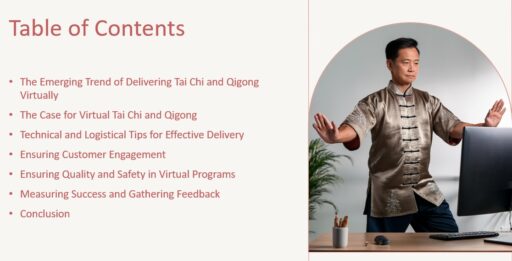There has been a significant rise in virtual Tai Chi and Qigong classes. These mind-body practices, which blend gentle movements with meditation, are now accessible to a wider audience thanks to online platforms. This transition to virtual delivery, driven largely by the COVID-19 pandemic, has provided new opportunities for both instructors and participants, offering health benefits to those who may not have had access before.
Two recently published scientific studies explored the benefits from virtual Tai Chi and Qigong through multiple angles.

A tutorial with details is available for ATCQA Members and Certified Instructors/Practitioners. Other people can purchase the tutorial for a small fee in our online store.
One of the primary benefits of offering Tai Chi and Qigong virtually is the ability to reach individuals who might otherwise struggle to attend in-person classes. People in rural areas, those with mobility challenges, or individuals who prefer to exercise from the comfort of home can now easily participate. The flexibility of virtual platforms breaks down geographical barriers and provides continuity, allowing individuals to maintain their wellness routines even when in-person sessions are unavailable.
For older adults in particular, virtual Tai Chi and Qigong have helped combat issues like loneliness and physical deconditioning by promoting regular, accessible movement. These programs have proven effective in enhancing physical and emotional well-being.
Virtual Tai Chi and Qigong have transformed the way mind-body practices are delivered. With the right tools, instructors can offer meaningful, therapeutic programs to a broader audience, ensuring that these healing practices thrive in the digital age.